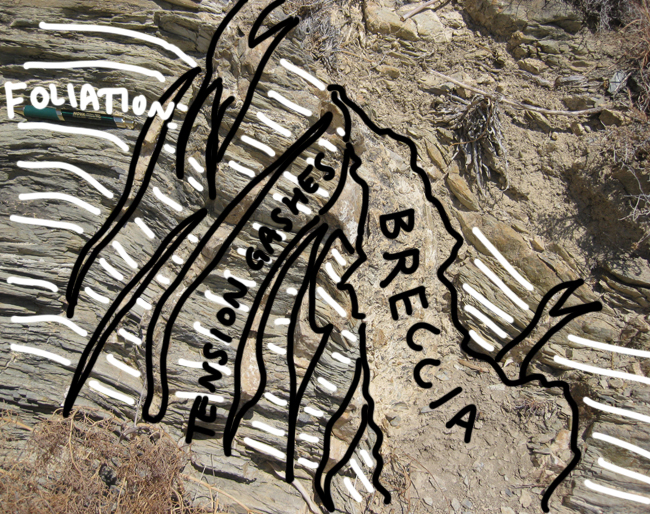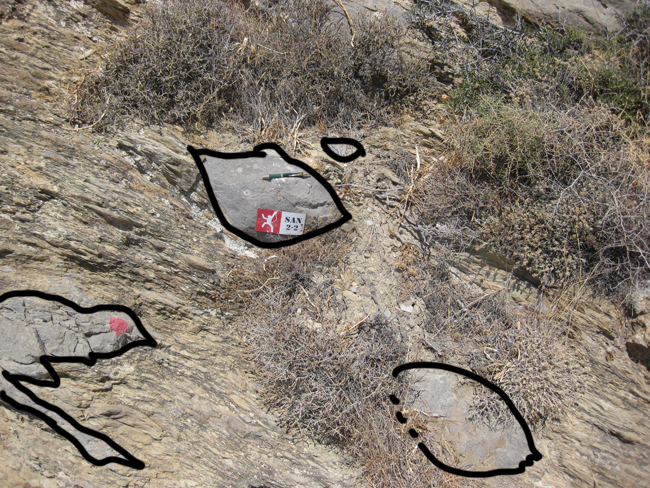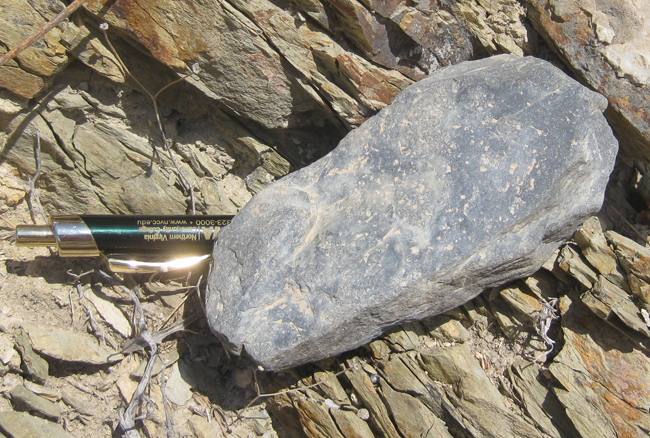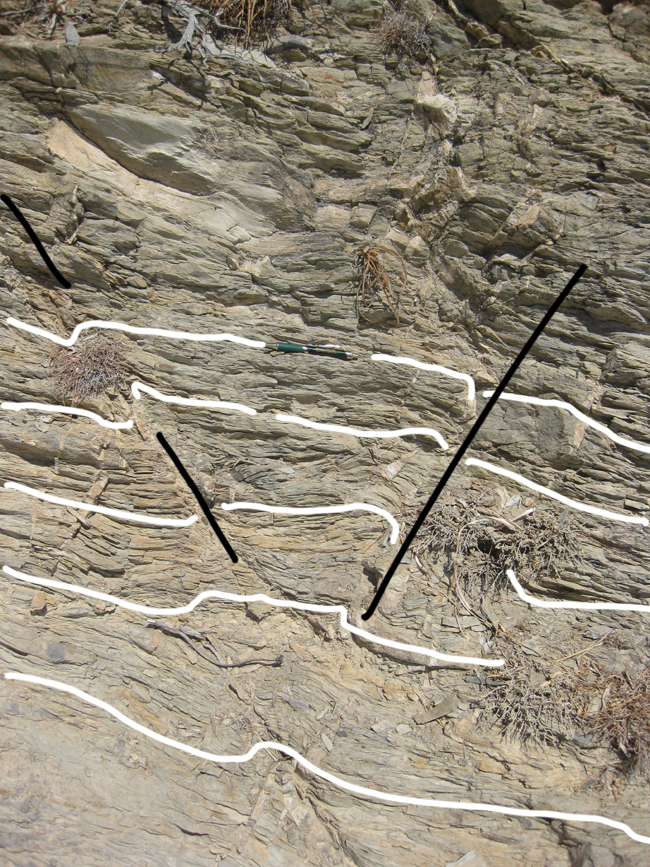15 October 2014
In search of Santorini’s blueschist, part 2: finding fault
Posted by Callan Bentley
As mentioned last week, I took a solo field trip north of Perissa, Santorini, Greece, in search of subducted rocks.
The contact between the two main rock types (marble and schist) was prominent and visible from a great distance (see photos in previous post), but what was the nature of this contact? Did it represent conformable stratigraphy? Was it a fault?

Here’s a closer look at the contact:

In places, both units could be observed to show brittle deformation…


Close ups of brecciation in marble:


This suggested to me that the contact was faulted. It may also, broadly speaking, be stratigraphic, but the deformation I observed along the contact indicated a pronounced history of shearing.
Within the schist, for instance, there were pods of marble, as seen here:

I interpret these as boudins, or perhaps more accurately as asperities of the marble, dismembered by faulting and “tumbled” into the less competent schist below.

Three other examples of this follow, with smaller marble “podlets” entrained in the schist:



This looks to me like tectonic mixing of the two lithologies. Further down, below the contact itself, the schist was more “pure,” with fewer macroscopic marble inclusions. Some of the schist below the contact was grayish, some was greenish, and some was bluish. Here are a couple of exposures I saw early on, lower down the hillside:


Here is an example from the highest point on the hill that I hiked to (i.e. to the contact and no further):

That schist is blue!
Blueschist was what I was after on this excursion, given that it’s a high-pressure, low-temperature sort of metamorphic rock – the kind of thing that could really only form in a subduction zone.
Image redrawn and modified by me from Figure 3 of Bousquet, et al. (2008), which is itself modified from Oberhänsli, et al. (2004), and also from University of British Columbia (1997), which is modified from Yardley (1988).
…And now I had spotted it! Here are a few samples:


As I learned several years ago in Turkey, the degree to which a rock “re-equilibrates” under high-pressure, low-temperature conditions is partly a function of those two physical variables, but also dependent on (a) the exact composition of the protolith and (b) the amount of water present and available to help facilitate chemical reactions (like the production of glaucophane). As a consequence, blueschist and blueschist-grade “greenschist” may co-exist in the same outcrop. Here’s an example of that; compare the hand-sample to the bedrock it rests upon:

I collected a couple of teaching specimens of both the blueschist, and the adjacent marble.
Some of the marble contained chert nodules that weathered out in positive relief:

Also, for the structurally-inclined, here’s a conjugate pair of kink bands (partly ruptured to become faults) disrupting foliation in some of the green schist:


Santorini’s geologic story doesn’t end with these subducted oceanic rocks, however. There is also a volcano there…



 Callan Bentley is Associate Professor of Geology at Piedmont Virginia Community College in Charlottesville, Virginia. He is a Fellow of the Geological Society of America. For his work on this blog, the National Association of Geoscience Teachers recognized him with the James Shea Award. He has also won the Outstanding Faculty Award from the State Council on Higher Education in Virginia, and the Biggs Award for Excellence in Geoscience Teaching from the Geoscience Education Division of the Geological Society of America. In previous years, Callan served as a contributing editor at EARTH magazine, President of the Geological Society of Washington and President the Geo2YC division of NAGT.
Callan Bentley is Associate Professor of Geology at Piedmont Virginia Community College in Charlottesville, Virginia. He is a Fellow of the Geological Society of America. For his work on this blog, the National Association of Geoscience Teachers recognized him with the James Shea Award. He has also won the Outstanding Faculty Award from the State Council on Higher Education in Virginia, and the Biggs Award for Excellence in Geoscience Teaching from the Geoscience Education Division of the Geological Society of America. In previous years, Callan served as a contributing editor at EARTH magazine, President of the Geological Society of Washington and President the Geo2YC division of NAGT.